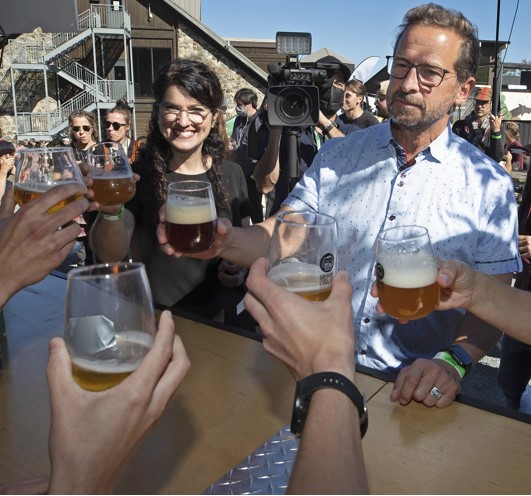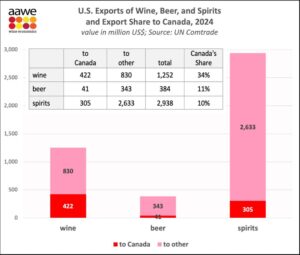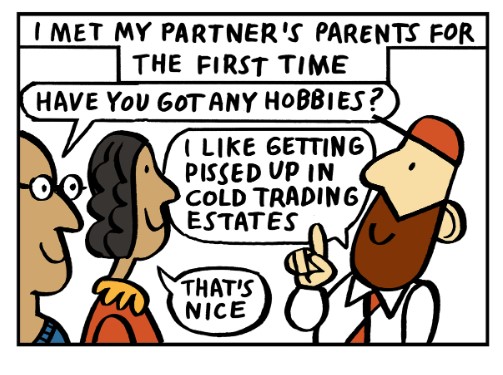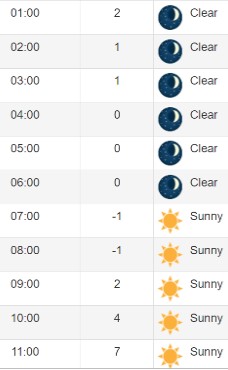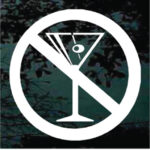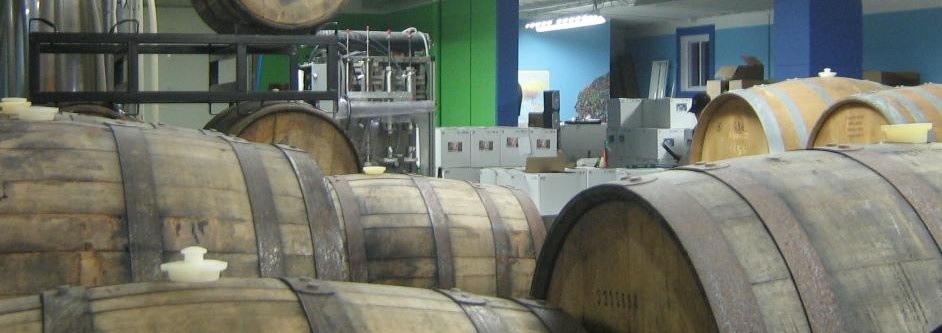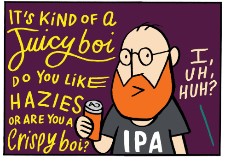 I have a little rule. I have been a Toronto Maple Leafs fan since the 1960s. I know that because I still have most of my 1969-70 O-Pee-Chee hockey cards. I also know that they have sucked for most of the 55 years since I bought them. Oh, there was Darryl and there was Wendle but in the last decade they’ve only won one playoff series – until this season. So my rule is obvious. I won’t watch them unless they win a series. Which they now have. And they won the next series’s game one too. Update: and game two.
I have a little rule. I have been a Toronto Maple Leafs fan since the 1960s. I know that because I still have most of my 1969-70 O-Pee-Chee hockey cards. I also know that they have sucked for most of the 55 years since I bought them. Oh, there was Darryl and there was Wendle but in the last decade they’ve only won one playoff series – until this season. So my rule is obvious. I won’t watch them unless they win a series. Which they now have. And they won the next series’s game one too. Update: and game two.
 Speaking of victory, I noticed an interesting sidenote to the Australian election last weekend with the after party for the winner Anthony Albanese being fueled by Albo Pale Ale. Albo? Albo:
Speaking of victory, I noticed an interesting sidenote to the Australian election last weekend with the after party for the winner Anthony Albanese being fueled by Albo Pale Ale. Albo? Albo:
…you might have heard of Albo. When this beer was brewed, he was simply the brewery’s local Member of Parliament who was known for his support of the craft beer industry, trains and the ocassional spot of DJing. He went on to be the 31st Prime Minister of Australia and his younger self will forever be immortalised in this beer, which sure beats a toilet.
BTW – that toilet. Speaking of objects holding liquids, Kevin K commented an interesting comment this week: “always seems there’s a strong lack of editing for glassware articles.” Is that a lack of strong editing? And is “strong lack” related to Strong Bad? Whatever it is… I fully agree. What was the object of his disappointment?
Cusack gave a thumbs-down to two common beer glasses. “Pints and mugs are fine for a quick pour, but they do nothing to highlight what makes an IPA good. Too open, too wide, they lose aroma fast,” Cusack told The Takeout. “Steins are worse — thick glass insulates the beer too much and dulls your senses.” Pints and mugs don’t actually do much to enhance any beer’s flavor (not just IPAs), but mugs and glass steins, with their thick walls and side handle, will do the job well when keeping your beer cold is a priority.
Me, I drink pretty much everything from the same hefeweizen glass if I am wanting to pay attention. Lots of schozz space to get right in there for a sniff. And it holds the temperature well. And it allows me to compare one experience with another a neutral yet effective context. Otherwise, anything will do. What’s up with a glass per beer anyway? It’s like audiophiles who have different stereo speakers for different sorts of music.* Who can afford that? Do you really want to be like audiophiles? It all sounds connected to hyperflavor related status anxiety.
On a similar theme, I was really impressed with one aspect of the announcement from the World Beer Cup.** Transparency. For such an overblown title,*** it was interesting to see that the relatively low number of entries competing in most categories. An average of 73 entries per category. No doubt most were perfectly swell but doesn’t that mean it’s pretty likely that any winner is actually not going to be the best out there? And, with only 53 entries, they found a way to discover that SNPA is an ESB! Mucho guffaw resulted.
Mike Seay may have caught the moment both neatly and tidily with this comment this week:
I need to start asking for tasters before ordering an IPA or even a Pale. You see, sometimes they end up being hazy when there was no indication of it on the menu description. And I am over hazzies…for now. Yes I could always ask for a taster before, but I like to just go for it. Give me a pint and I’ll drink it, even if it ends up sucking. But I am getting too many New Englands when I was wanting a West Coast, so I gotta start asking, I guess.
Hazzies? Is that what we call a grouping of badly thought out hazies now? Maybe huzzies or hizzies even? And exactly how many beer educators did it take to get us to the place where you can’t order a beer and have a clue what you’re about to drink? And is that part of what Jeff meant by the wallpaper phase? Or perhaps what led us to this point:
Craft beer isn’t new and exciting anymore, and almost everyone has heard of it, and the vast majority of potential future customers have experimented with it. What breweries have to do now is sell their product to people who are already familiar with it—but also blasé about it. Craft beer is part of the wallpaper of alcoholic beverages now—present, but in the background, familiar and easy to ignore. Selling a product like that is very different than selling beer in 2000.
And Matthew C perhaps spoke to a similar idea with another sector of the beer trade in his note on Bluesky introducting this week’s feature at Pellicle:
Top stuff from Emmie Harrison-West on the site today about a really interesting no and low alcohol brewery near Edinburgh. It might be our last no and low piece, at least for now, as despite lots of (apparent) interest in what is often cited as the fastest growing sector in beer, the pieces we’ve published to date have struggled to gain traction with our audience.
What to make of all that? Perhaps conversely but definitely offering a ray of hope in this, Jamie Goode wrote an interesting article on standardization and balance (for the lyrically named WineMag.Co.Za) which easily applies to a lot of good beer:
This is the problem with the concept of balance. It can lead to a certain stylistic homogeneity; to boring wines that tick all the boxes, but which fail to thrill. Alongside this concept of balance, we have the problematic notion that we always want to drink the same sort of wine. There are even people who peddle protocols for matching consumers with the right wine for them. The truth is that we want to drink different wines on different occasions. I have lots of wines at home, but it’s not easy finding the right wine for the right moment, even though I have only wines that I like to hand. I think the concept of balance in wine is next to useless. It should be about whether or not a wine has personality, and whether or not that wine, with its personality, is the right wine for this particular drinking occasion. I want my wines to be interesting…
Me too. And my beers. But what is it to be interesting… and what makes it so? (And, he thought to himself, if we just left these clinky drinky things to individuals and their own interests, well, what would we do with all the experts and, horrors, the editors?) Hmm… Drew Starr has an idea that perhaps may help frame the concept:
I think we discussed my theory of cognition for quirky regional food I conjured after Nick Tahou’s. Anyone can appreciate it, but you have to try it before your brain matures at 26 to have a love that defies objectivity. You always love it more when older, because the memory of youth is delicious… Ask me or anyone who grew up in Western MA who makes the world’s best burger, we’ll say White Hut, an objectively incorrect answer that we are incapable of being made to believe otherwise.
So… the things that are interesting are things that relate to the person by whom… in which… that interesting thing is / was experienced. Radical. Matty himself, for the double, had a similar sort of tingly sensation this week, not from a recollection of youth but from being in the audience for a performance of Hamlet:
Such was the intensity and physicality of the performance as a whole that I can’t stop thinking about it. Samuel Blenkin, playing the titular role, was gripping. The way music and dance was weaved throughout meant I couldn’t look away for the whole 90 minutes. It was dark and visceral and unrelenting and sad and funny. Of course, I had to go for a pint and sit down afterwards, to help myself come down. But as I did so I realised in witnessing such a brilliant act of creativity my very soul itself felt nourished. I was full to the brim. There are moments in life, sometimes major, sometimes fleeting, but they leave a permanent mark on you. My first sip of IPA at Odell Brewery, devilled kidneys on toast at St. John, Mills Foxbic at Hereford Beer House, the reuben on rye at Choice City Deli. These are experiences that helped shape my worldview.
Is that what Goode meant by interesting? Probs. As one who is perpetually in that condition, when they prepare the syllabus for the Master degree seminar on The Beer Nut this will be one of the key passages the class will have to study:
…I didn’t think it worked very well, but I’m told by Kev the brewer and owner that I’m wrong, which is fair enough…
Returning to that piece in Pellicle, the not wrong and definitely interesting Emmie Harrison-West offered up a portrait of Jump Ship Brewing, low-no alcohol brewers near Edinburgh, and unpacked the background:
Like many of us as we age, Sonja found that her tolerance for booze had dropped. She was becoming irritable after drinking and dreaded the day after. “I was drinking less, but it was that Tuesday night beer that I was really craving. You know, when you’re finally sitting down, the kids are in bed, you’re tired and up early for work,” she says. Sonja discovered that an NA beer really scratched that itch, but she still felt like something was missing: choice. Sure, she was making better choices for herself, but found her options in terms of the variety of NA beers available were woefully limited. “That’s when I thought, ‘why don’t I just do it?’,” she tells me.
Swtiching a bit abruptly to the Health News Desk: the recent flurry of discussion about Savory IPA got me thinking again about the need to label the ingredients on beer. See, like a lot of people I am allergic to MSG – the key additive apparent miracle that transforms a humdrum beer into an amazing new style! It’d be nice to have informed decision making so I can know if my respiratory equiment is going to seize up or not.
And, perhaps taking a breather from all that above, I really liked David Jesudason‘s piece**** on the Alehouse in Reading where he found people ready to just have a chat:
It never was my plan to travel 50-odd miles in a four-hour round trip for this specific chat but that’s where my day took me. I had a vague idea to visit the Alehouse for the second time because, inspired by The Shiralee, I wanted somewhere a bit rough and ready where I knew there would be people drinking in the day despite the broad sunshine outside. The pub is covered head to toe in pump clips, has a queue of pickled egg jars at the bar and various hair rock songs being played through the speakers – the only tune I could place was Queen’s Fat Bottomed Girls, and it’s been a long time since these women made the rocking world go round.
All of which, coming full circle, brings me to the thought that Boak and Bailey shared on their Patreon back channel last weekend and gave us all the “oomph” of the year in beer, YTD-wise:
Jeff Alworth’s wallpaper post got us thinking about lots of things, but mostly that time passes quickly before you notice it. It’s easy to feel as if craft beer is a thing that just landed, beloved of fresh-faced hipsters. But even in its most recent form – IPAs and punks and skulls – it’s been around for several decades. Thornbridge Jaipur, an especially significant beer in British craft beer, turns 20 this year. There are people at university now who have never lived in a Jaipurless world – who don’t remember a time before BrewDog, or Beavertown.
Me: “I’m not 62! That old guy over there is!!!” What is it we want from all this anyway? Being part of Club Craft? Nope. A nice chat sound perfectly nice, if I am being honest. And a nice beer in any frikkin’ glass I feel like using. See, the failings of craft now so evident in 2025 – especially the failure to reign victorious as was clearly promised a decade or more ago – reminds me of what I recently read in that grab bag of convenient quips for we the aged alumni with the BAs, The New Yorker, on the translation of Catullus:
Precisely what makes much of Catullus’ work so appealing and “relatable” to modern audiences—the offhand charm, the impish vulgarity, the jazzy colloquialisms—makes him that much more difficult to bring into modern English. Ordinary language, after all, has a far shorter shelf life than does the elevated language of high literature; translations of Catullus that are barely twenty years old already feel dated. Peter Green’s “Wretched Catullus, stop this stupid tomfool stuff” sounds positively Victorian next to Mitchell’s “Wretched Catullus, stop this crazy longing.”
It lives in the past tense, does craft. It is, to my adult chidren, exactly that: stupid tomfool stuff. Not beer, mind you, which is good. Beer remains interesting.
That’s it for this week. I am on a train later today so may be delayed in responding to all your emails and DMs and stuff. Bear with me. Until we meet again, please check out Boak and Bailey every Saturday (…as long as all their holiday fun doesn’t get in the way…) and Stan (….not quite…) each and every Monday. Then listen to a few of the now rarely refreshed Lew’s podcasts and get your emailed issue of Episodes of my Pub Life by David Jesudason on the (sometimes even but never) odd Fridays. And maybe The British Food History Podcast. Maybe? And Phil Mellows is at the BritishBeerBreaks. Once a month, Will Hawkes issues his London Beer City newsletter and do sign up for Katie’s wonderful newsletter, The Gulp, too. Ben’s Beer and Badword is out there with the all the sweary Mary! And check out the Atlantic Canada Beer Blog‘s weekly roundup. There is new reading at The Glass which is going back to being a blog. Any more? We have Ontario’s own A Quick Beer featuring visits to places like… Michigan! All About Beer has given space to some trade possy podcasts and there’s also The Perfect Pour. Plus follow the venerable Full Pint podcast with an episode just last month!. And there’s the Craft Beer Channel on Youtube. Check out the archives of the Beer Ladies Podcast. That’s quite good but, hmm, they’ve also gone quiet this year. The rest of these are largely dead. And the long standing Beervana podcast …except they have now stood down. As has We Are Beer People. The Share looked to be back with a revival but now its gone quiet. And the Boys Are From Märzen podcast appears suspended as does BeerEdge, too. VinePair packed in Taplines as well. All dead and gone. There is more from the DaftAboutCraft podcast, too. Nope – that ended a year ago. The Moon Under Water is gone – which is not surprising as the ask was $10 a month. Pete Brown’s one cost a fifth of that – but only had the one post. Such is life. Such is beer podcasting and newlettering!
*“Disco Woofer” would be a great name for an DIPA. Or a speaker.
**No doubt intended to be confused with the equally grandiosely World Beer Awards. Not to mention the World Awards of Beer.
***Olympics? That all? Surely it’s the Mount Olympus of Beer! Even as the BA continues its logical retraction, the fawning seems to be enhanced.
****His writing in which reminded me of another passage from another article in that same issue of The New Yorker from March 30 2025: “Much of the art of “Encounters with the Archdruid” lies in the way that McPhee manages to be both there and not there. He bathes his aching feet in the water. He recalls other trips he has taken with Brower and, separately, with Park. He searches for copper-bearing rocks, and, when he finds them, gets excited. But he never reveals whose side he is on. When it comes to the great question of the piece—to mine or not to mine—he gets out of the way.“

